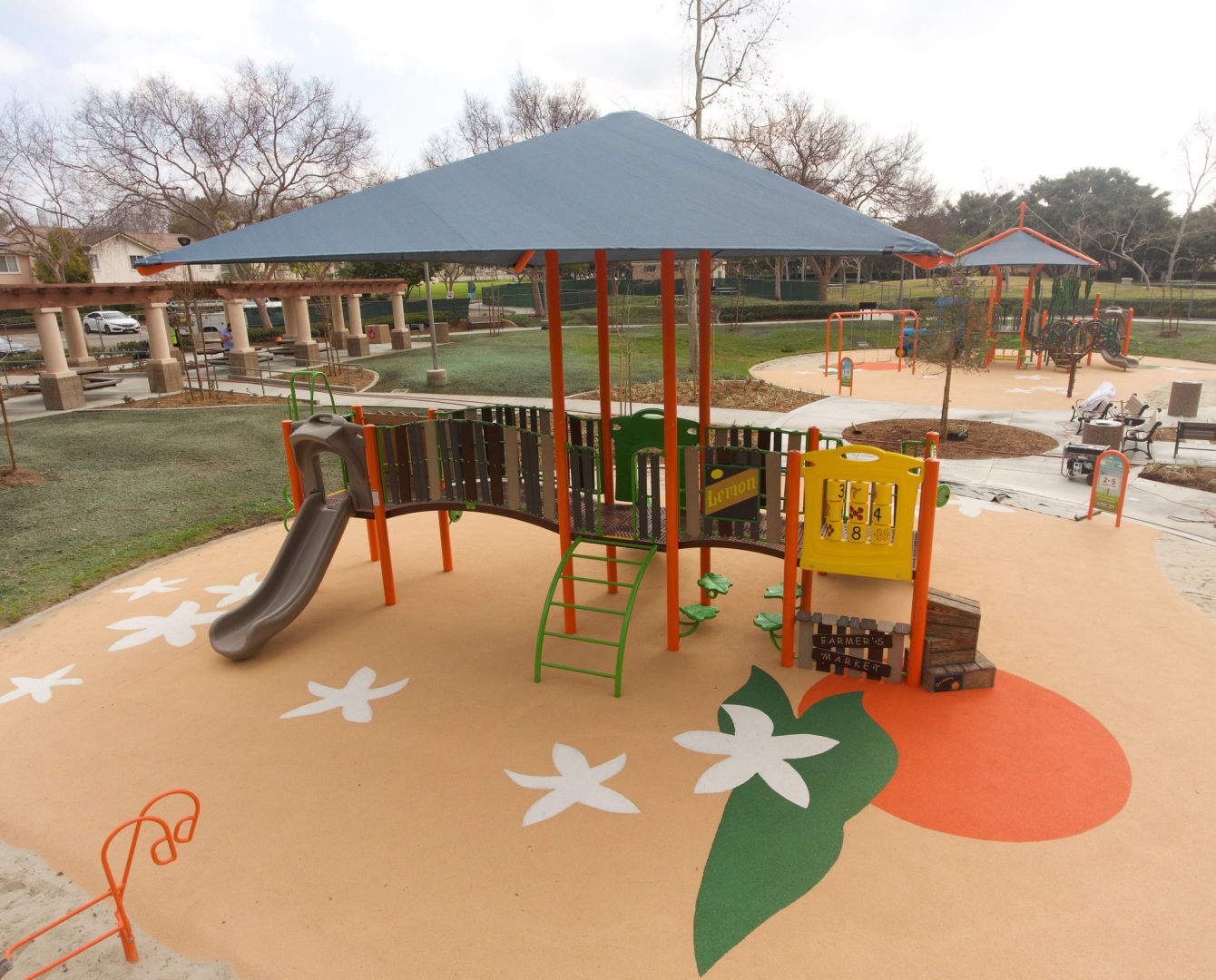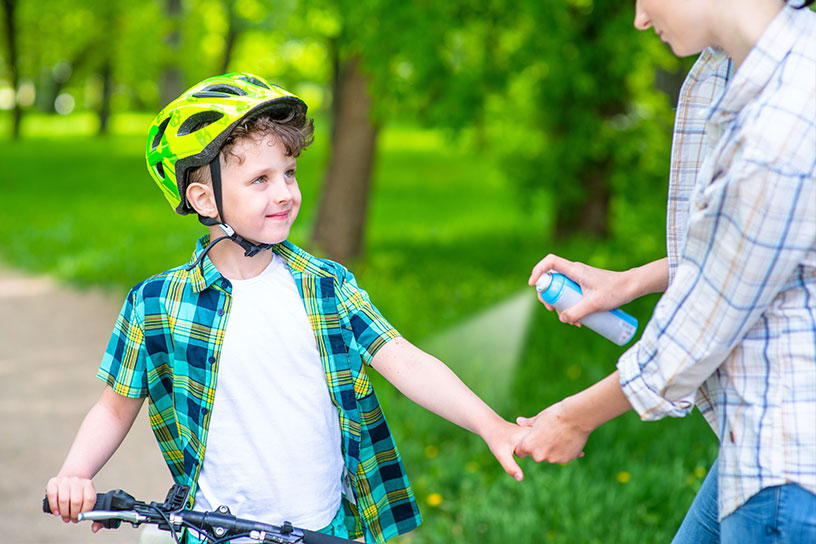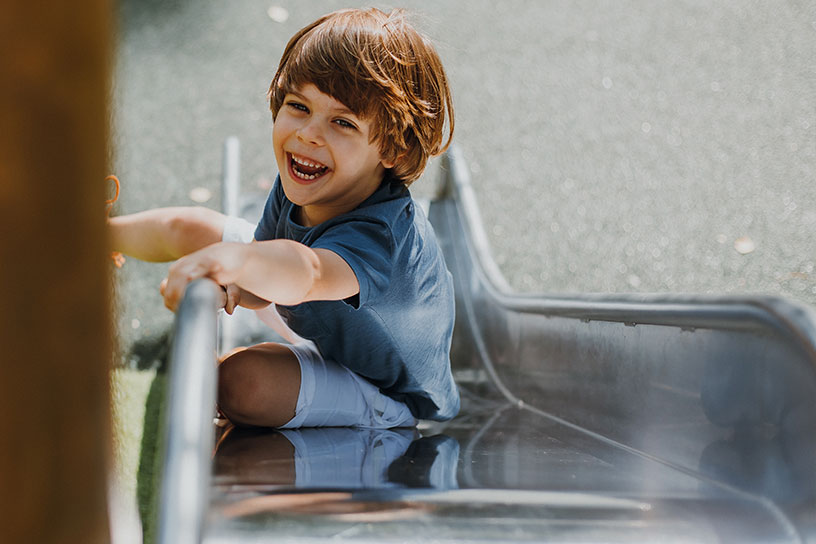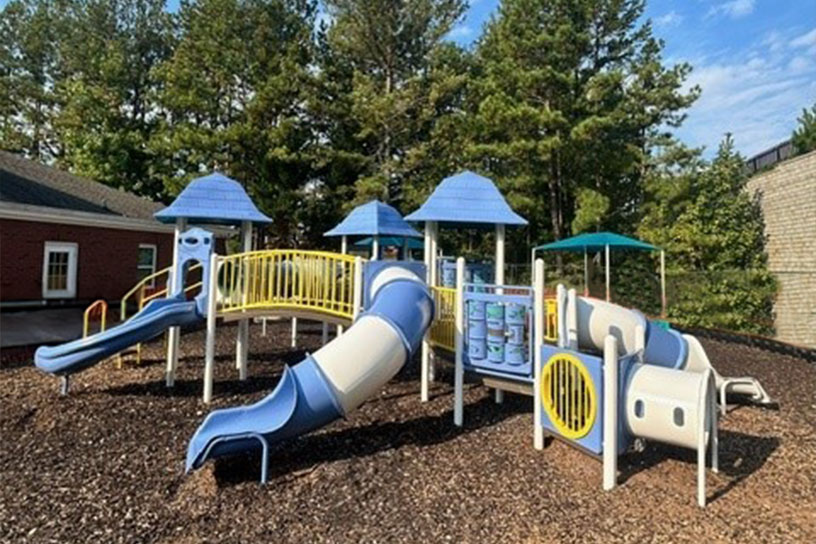If you are looking to install a new playground, you’re likely wondering what the best mulch for playground equipment is. We’re here to help you understand your options and the safety benefits they provide.
What Is the Best Mulch for Playgrounds?
Many people are familiar with mulch as a popular playground surface. However, traditional wood mulch is not safe for use on playgrounds. Wood mulch:
- Contains hard, sharp tree bark
- Can cause scrapes and splinters
- Can mold over time from moisture
- Provides significantly less protection when frozen
- Does not absorb shock adequately
Furthermore, most wood mulch is designed for multi-purpose use. It is not for use around children, meaning it can contain debris and/or foreign materials. Choosing a surface designed with children in mind is a must when installing playground equipment.
Is Wood Mulch Safe At All?
The bottom line is that wood mulch is not a safe surface for playground equipment. The only time that wood mulch is safer is when compared to grass, dirt, asphalt, or cement.
While throwing down some leftover garden mulch under your playground may seem like no big deal, the impact can be more significant than you’d imagine. According to the CDC, about 45% of playground-related injuries are classified as severe. This includes fractures, internal injuries, concussions, dislocations and amputations. Concussions, fractures and internal injuries are a particular concern when it comes to major falls onto your playground surface.
Wood Mulch Alternatives
There are a number of alternatives to wood mulch for playgrounds. Engineered wood fiber (EWF) and rubber mulch are the two closest options when it comes to price and aesthetics.
EWF
EWF is extremely similar to wood mulch in terms of its visual appearance. However, it contains no wood bark and is processed to avoid large, sharp pieces. Because it requires processing, it is slightly more expensive than EWF, but the cost difference is outweighed by the improvement in safety it provides.
Rubber Mulch
Rubber mulch is another great alternative to traditional wood mulch. It is arguably the best mulch for playground safety. And, it comes in tons of different colors for a fun, unique look. Rubber mulch is also slightly more expensive than traditional wood mulch, but for that price you get the assurance that your surfacing is 100% safe rubber, with no debris or foreign materials.

Unitary Surfaces
Both EWF and rubber mulch are loose-fill surfacing options. That means they can blow away and thin over time. That means they will require topping up regularly to maintain safe depths for impact absorption.
If you are looking for a lower maintenance playground surface, you may want to consider a unitary surface like pour-in-place rubber, rubber interlocking tiles, or even artificial turf. While these surfaces still require regular inspection, they are typically more durable than loose-fill alternatives.
How Do I Know If My Playground Surface Is Safe?
Now that we’ve discussed the best mulch for playground safety, you may have questions about the safety of your current surface. For decades, surface safety was left up to guesswork – but now there are tools to measure how well your surface absorbs impact and protects a child’s head and brain in the case of a fall.
The Triax 2010 Safety Impact Test (SIT) uses a device that mimics the shape of a child’s head. It features a built-in accelerometer and other measurement tools that help experts calculate the severity and duration of an impact. With this information, they can assess whether a surface provides adequate protection against concussions and traumatic brain injuries from a typical fall height.





